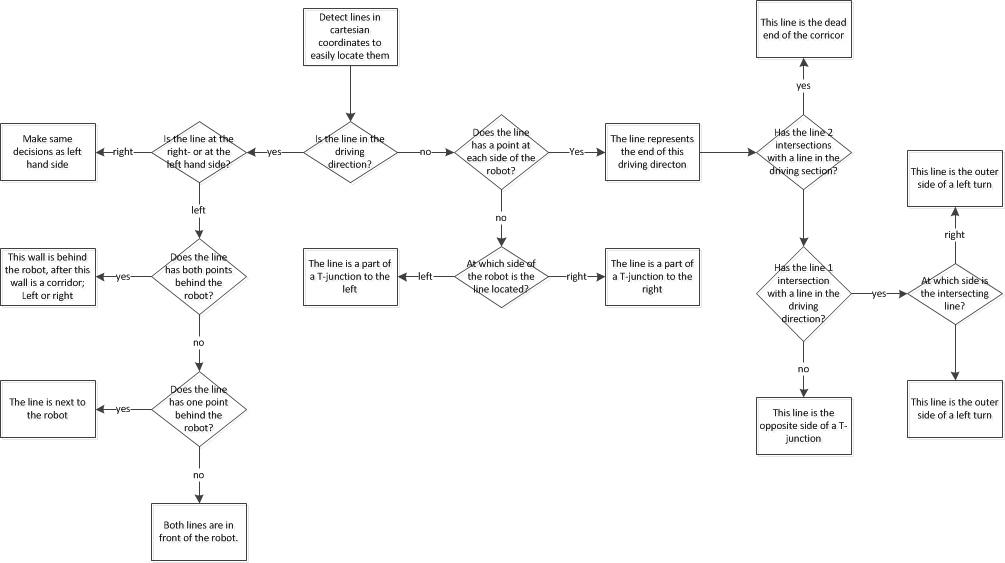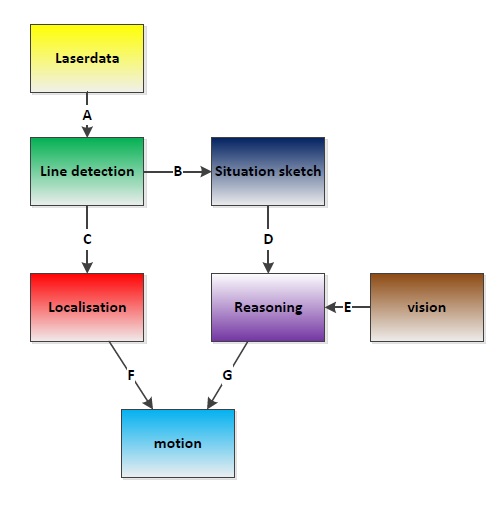Embedded Motion Control 2013 Group 1: Difference between revisions
m (→Week 2) |
m (→Group Info) |
||
| Line 51: | Line 51: | ||
</tr> | </tr> | ||
</table> | </table> | ||
== CODE == | |||
== Meetings == | == Meetings == | ||
Revision as of 16:48, 23 September 2013
Group Info
| Name: | Abbr: | Student id: | Email: |
| Groupmembers (email all) | |||
| Paul Raijmakers | PR | 0792801 | p.a.raijmakers@student.tue.nl |
| Pieter Aerts | PA | 0821027 | p.j.m.aerts@student.tue.nl |
| Wouter Geelen | WG | 0744855 | w.geelen@student.tue.nl |
| Frank Horstenbach | FH | 0792390 | f.g.h.hochstenbach@student.tue.nl |
| Niels Koenraad | NK | 0825990 | n.j.g.koenraad@student.tue.nl |
| Tutor | |||
| Jos Elfring | n.a. | n.a. | j.elfring@tue.nl |
CODE
Meetings
(Global) Planning
Week 1 (2013-09-02 - 2013-09-08)
- Installing Ubuntu 12.04
- Installing ROS Fuerte
- Following tutorials on C++ and ROS.
- Setup SVN
Week 2 (2013-09-09 - 2013-09-15)
- Discuss about splitting up the team by 2 groups (2,3) or 3 groups (2,2,1) to whom tasks can be appointed to.
- Create 2D map using the laser scanner.
- Start working on trying to detect walls with laser scanner.
- Start working on position control of Jazz (within walls i.e. riding straight ahead, turning i.e. 90 degrees).
- Start thinking about what kind of strategies we can use/implement to solve the maze (see usefull links).
Week 3 (2013-09-16 - 2013-09-22)
- Start work on trying to detect openings in walls.
- Start working on code for corridor competition.
- Continue thinking about maze solving strategy.
Week 4 (2013-09-23 - 2013-09-29)
- Decide which maze solving strategy we are going to use/implement.
Week 5 (2013-09-30 - 2013-10-06)
- To be determined.
Week 6 (2013-10-07 - 2013-10-13)
- To be determined.
Week 7 (2013-10-14 - 2013-10-20)
- To be determined.
Week 8 (2013-10-21 - 2013-10-27)
- To be determined.
Progress
Week 2
Flowchart of the situation node Each end point can be of interest to map the current situation.
The situation node produces a message containing 3 boolean and one float32. The booleans represent possible drive direction, left, straight and right. The float32 contains the distance (in centimeters) to the first corner/T-junction or dead end.
For the location node only 2 lines are necessary (one left and one right)

The localisation node produces a message containing 3 float32. The first float32 represents the average angle (in radians) of the 2 lines between which the robot is driving. (a value of zero means that the robot is driving straight through the corridor, negative value means that the ) This value is a input for the motion node to correct the driving angle
The second float32 represents the shortest distance (in centimeters) between the detected line at the left of the robot and the current position. The third float32 represents the shortest distance (in centimeters) between the detected line at the right of the robot and the current position. these values are input for the motion node to correct the driving position in the corridor
The next assumptions are made for the localisation node: 1: The robot needs to drive in between 2 walls 2: The walls start behind the robot and continue in front of the robot 3: When a turn is made, is should be around 90 degree, and the robot needs to drive in the corridor before localisation can be executed
Software architecture
| Line: | Data type: | Ros stack/msg: | Ros topic: |
| A | - | ||
| B | float-32 multi array (cart. points) | ||
| C | float-32 multi array (cart. points) | ||
| D | 3x boolean + 1 float32 | ||
| E | - | ||
| F | 3x float32 | ||
| G | float-32 float-32 |

